Understanding food sensitivities and dietary preferences is crucial for ensuring safe and inclusive dining experiences. Clear labeling with descriptive icons helps individuals make informed choices, accommodating their health needs and personal preferences.
Below is a list of common food sensitivities and dietary preferences, each accompanied by a description and representative icon.
Animal Based
Animal based foods such as meat, fish, eggs, and dairy
Beef / Red Meat
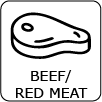
Meat from cows, sheep, venison, and bison
Chicken / Poultry
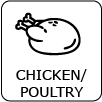
Meat from domestic fowls, including chickens, turkeys, geese, and ducks
Crustaceans

Meat from aquatic animals that have jointed legs, a hard shell, and no backbone, including crab, crayfish, lobster, prawns, and shrimp.
Dairy

Food products made from or containing milk, including butter and cream
Egg

Unfertilized, shelled embryos from fowl, including chickens, ducks, and quail
Fish

Meat from aquatic vertebrates, including salmon and catfish
Gelatin

Food ingredient derived from animal bones
Honey
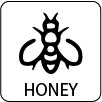
Sugary substance made by bees
Mollusks

Meat from soft-bodied invertebrates that have a calcium carbonate shell, including clams, mussels, scallops, oysters, octopus, snail, and squid.
Pork

Meat from domestic swine, including pigs, hogs, and boars
Fruits & Vegetables
Fruits and vegetables are edible parts of plants
Apple
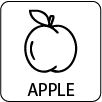
Fruit of the apple tree
Asparagus
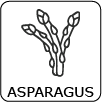
Young shoots of the asparagus plant
Artichoke

The edible part of a thistle species, harvested as flower buds before they bloom.
Arugula

Leaves of the arugula plant, also known as Rocket
Avocado
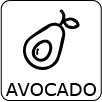
Fruit of the avocado tree
Bamboo

The young, tender shoots of certain bamboo species that are harvested before they mature
Banana

Fruit of the banana plant
Beets
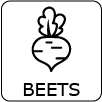
Root of the beet plant
Bell Peppers

Non-spicy variety of the fruit from the pepper plant
Blueberry

The berry of the blueberry plant
Broccoli
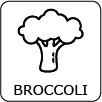
Stalks and buds of the broccoli plant
Brussel Sprouts
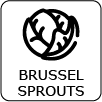
A cruciferous vegetable that look like tiny cabbages
Cabbage
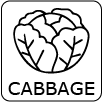
Leafy head of the cabbage plant
Capers

The pickled flower buds of the Capparis spinosa plant
Carrot
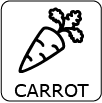
Root of the carrot plant
Cauliflower

Stalks and buds of the cauliflower plant
Celery

Stalks and leaves of the celery plant
Cherry

Fruit of the cherry tree
Cilantro / Coriander

Stalks and leaves or seeds of the cilantro plant
Citrus
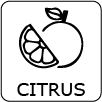
Fruit of citrus plants including limes, lemons, and grapefruits
Coconut

Seed of the coconut tree
Cranberry
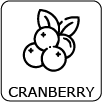
Fruit of the cranberry tree
Cucumber
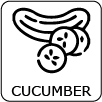
Fruit of the cucumber vine
Dates

Fruit of the date tree
Eggplant

Fruit of the eggplant vine
Fig

Fruit of the fig tree
Garlic

Root of the garlic plant
Ginger

Root of the ginger plant
Grapes
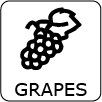
Fruit of the grape vine
Hot Peppers

Spicy variety of the fruit from the pepper plant
Kiwi

Fruit of the kiwi tree
Lettuce
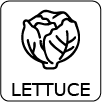
Leaves of the lettuce plant
Mango

Fruit of the mango tree
Melon
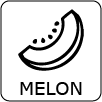
Fruit of the melon vine, including cantaloupe, honeydew, and watermelon
Mushrooms
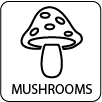
Fruit bodies of macro fungi
Okra

A green vegetable that comes from the seed pods of the okra plant
Olives
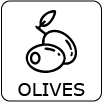
Fruit of the olive tree
Onions

Root of the onion plant
Parsley

Stalks and leaves of the parsley plant
Papaya
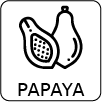
Fruit of the papaya tree
Passion Fruit
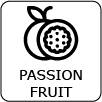
Fruit of the passion fruit tree
Peach
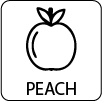
Fruit of the peach tree
Pear
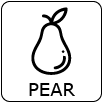
Fruit of the pear tree
Peas
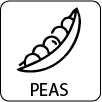
A small, round, green vegetable that grows in pods of a plant in the legume family
Pickles

Pickled cucumbers in vinegar and spices
Pineapple

Fruit of the pineapple plant
Plantain

The fruit of the plantain banana plant
Plum
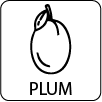
Fruit of the plum tree
Pomegranate

Fruit of the pomegranate tree
Potato
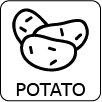
Root of the potato plant
Pumpkin

Edible flesh or seeds from a gourd family of plants
Radish
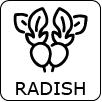
Root of the radish plant
Raisins

Dehydrated fruit of the grape vine
Rhubarb

A plant with long, reddish or green stems that are edible when cooked
Seaweed

A food source made from algae that grows in the ocean
Seeded Berry
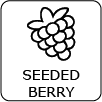
Seeded fruit of berry plants and bushes, including raspberries and blackberries
Spinach
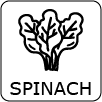
Leaves and stalks of the spinach plant
Sprouts
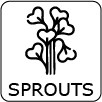
Germinated seeds or young shoots of plants
Squash

Fruit of the squash plant
Strawberry
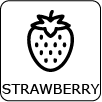
Fruit of the strawberry plant
Sweet Potato
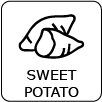
Root of the sweet potato plant
Tamarind
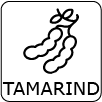
The pulp of the fruit of the Tamarind tree
Tomatillo
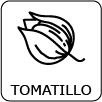
Also known as the Mexican husk tomato
Green or green-purple fruit of a plant of the nightshade family
Tomatoes
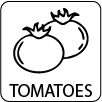
Fruit of the tomato vine
Truffle
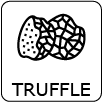
The edible subterranean fruiting body of fungi
Zucchini

Fruit of the zucchini plant
Water Chestnut

Crisp, aquatic corm of plants like Eleocharis dulcis
Yucca

Root of the yucca plant
Grains, Seeds, & Nuts
Grains are seeds that come from grasses. Seeds also come from flowers. Beans are seeds that come from legumes. Nuts are seeds that come from trees.
Beans

The seed of any plant in the legume family
Chia Seeds

Small, edible seeds from the flowering plant Salvia hispanica
Corn
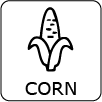
Grain from the corn plant
Lupin
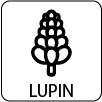
Flour and seeds of the lupin plant family used in baking (bread, pasta, cakes) as a gluten-free alternative
Oats
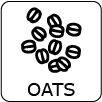
A species of cereal grain grown for its seed
Peanut

Seeds of the peanut plant
Poppy

Seeds of the poppy plant
Quinoa
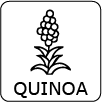
Seeds of the plants in the amaranth family
Rice
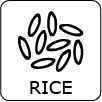
Grain from rice grasses
Sesame

Seeds of the sesame plant
Soy
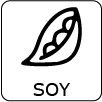
Seeds of the soy plant
Tree Nut

Almonds, Brazil nuts, cashews, chestnuts, filberts/hazelnuts, macadamia nuts, pecans, pistachios, shea nuts and walnuts
Wheat
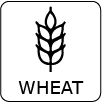
Grains from various grasses
Sauces & Spices
Sauces and spices are condiments added to food during or after cooking
Allspice

The dried aromatic fruit of a West Indian tree
Anise

Aromatic seeds of a Mediterranean plant of the parsley family
Basil
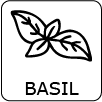
Leaves and stalks of the basil plant
Bay Leaf

The aromatic dried leaf of the bay tree
Bitters

A liquor that is flavored with plant extracts
Black Pepper
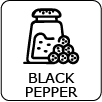
The dried black berries of the pepper vine
Caraway

The seeds of a plant of the parsley family
Cardamom

The aromatic seeds of a plant of the ginger family
Chocolate

Roasted and ground cacao seeds, typically sweetened
Cinnamon

The peeled, dried, and rolled bark of a Southeast Asian tree
Cloves

The dried flower bud of a tropical tree
Cumin
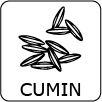
The seeds of the parsley plant
Curry

Leaves or powdered root of the curry plant
Dill
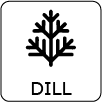
Fresh or dried Leaves and stems from the dill plant
Fennel

Leaves and stems or seeds from the fennel plant
Hibiscus

Edible hibiscus includes species like Hibiscus sabdariffa and Hibiscus acetosella, whose leaves, flowers, and calyces are eaten in teas, salads, and dishes for their tart flavor and health benefits.
Horseradish

Root of the horseradish plant
Lemongrass
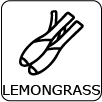
Stalk of the lemongrass plant
Maple Syrup
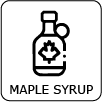
Syrup made from the sap of maple trees
Mayonnaise
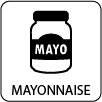
An emulsion of oil, egg yolk, and vinegar or lemon juice
Mint

Fresh or dried leaves of the mint plant
Mustard

Paste from the seeds of the mustard plant
Nutmeg

Dried fruit of the nutmeg plant
Oregano

Fresh or dried leaves of the oregano plant
Paprika

The dried and ground fruits of certain varieties of pepper
Sage

Fresh or dried leaves of the sage plant
Salt

The crystalline compound of sodium chloride
Seafood Seasoning
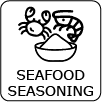
A mix of celery salt, red pepper, black pepper, paprika, and other spices
Rosemary

Fresh or dried leaves of the rosemary plant
Thyme
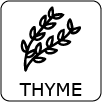
Fresh or dried leaves of the thyme plant
Turmeric
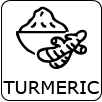
Fresh or dried root of the turmeric plant
Vanilla

The processed beans or extracts derived from vanilla orchids, used as a flavoring in food and beverages.
Vinegar

A sour, acidic liquid made from fermented ethanol, used in cooking, preservation, and flavoring.
Wasabi

A paste made from the ground rhizome of the wasabi plant
Oils (Cooking & Finishing)
A plant or animal liquid fat used in frying, baking, and other types of cooking or as a finishing ingredient
Avocado Oil
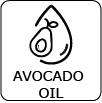
Oil from the avocado fruit
Beef Tallow
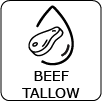
Rendered beef suet
Canola Oil

Oil from rapeseeds
Coconut Oil
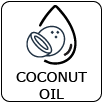
Oil from coconuts
Corn Oil
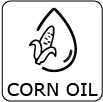
Oil from corn
Flax Seed Oil
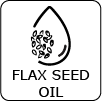
Oil from flax seeds
Grape Seed Oil
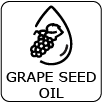
Oil from grape seeds
Lard
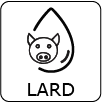
Rendered pork suet
Olive Oil
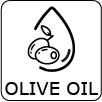
Oil from olives
Palm Oil

Oil from palm trees
Peanut Oil
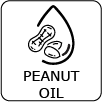
Oil from peanuts
Sesame Oil

Oil from sesame seeds
Soy Oil
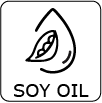
Oil from soybeans
Sunflower Oil

Oil from sunflower seeds
Vegetable Oil
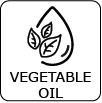
Oil from various seeds and plants
Other
Other Ingredients and additives
Added Sugar

Sugar added in addition to the sugars naturally in ingredients
Alcohol

Beers, wines, and spirits
Artificial Sugar

Chemicals that are added to foods and drinks to make them taste sweet
Artificial Color

Man-made dyes that are used to add or enhance the color of food
Caffeine

A naturally occurring stimulant found in plants like coffee beans and tea leaves
Cross Contact

Cross-contact occurs when an allergen is inadvertently transferred from a food containing an allergen to a food that does not contain the allergen. Cooking does not reduce or eliminate the chances of a person with a food allergy having a reaction to the food eaten.
Cross contact is possible with all foods. The supplied information is meant only as a guide and in no way guarantees the absence of allergens.
Decaffeinated

Coffees and teas processed to remove as much caffeine as possible
Gluten Free

Food that does not contain gluten, a protein found in wheat, barley, and rye.
Spicy

Any dish or ingredient that has a hot, pungent, or burning sensation, typically due to compounds like capsaicin found in chili peppers.
Sulfites

Chemical compounds containing sulfur used as preservatives in food, beverages, and medications to prevent spoilage and discoloration.
Plant Based
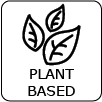
Food made from plants or consists mainly of plants
Vegan

Food that comes from plants and does not contain any animal products
